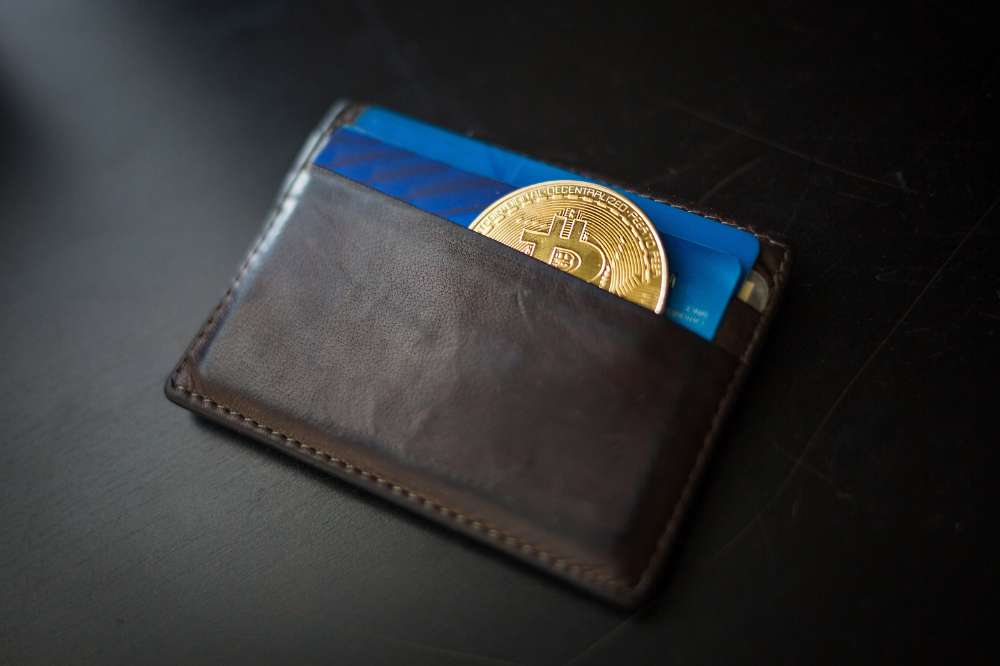The launch of Bitcoin about a decade ago started the trend of cryptocurrencies. These days, there are thousands of different cryptocurrencies in the market (at least 18,000), and it can get overwhelming for a newbie to decide what to invest in. Just as all of the world’s real currencies aren’t on the same footing, so aren’t the ones in the crypto-verse. The market capitalization, or the market value of all circulating coins, and the risks involved are primary factors to help an investor make a decision.
What Are Cryptocurrencies?
In the broad sense, cryptocurrency implies virtual or digital money available in the form of tokens or ‘coins’ and exists on a distributed and decentralized ledger blockchain. There is no central issuing or regulating authority for cryptocurrencies. While some of these have taken their place in the physical world through credit cards or some projects, the vast majority remain virtual.
The crypto in cryptocurrency implies cryptographic techniques used to create and process digital currencies along with transactions across decentralized systems. They’re developed with mining techniques, coding, and other controls. This is based on a peer-to-peer system enabling anyone to exchange payments anywhere.
No products found.
Those modeled after Bitcoin are collectively termed altcoins, presented as the modified and improved versions of Bitcoin. None have been able to match the security levels of Bitcoin’s network, while some might have additional, impressive features.
Altcoins Types
Cryptocurrencies
Used in place of digital currency, for payment, the value of these is transmitted across a decentralized network of users. Crypto that is not Bitcoin or Ethereum are altcoins and may be referred to as value tokens.
Tokens
Intended for purposes apart from money are blockchain-based tokens. Tokens linked to a company’s or project’s value are referred to as security tokens (implying stocks). Alternatively, tokens with a particular use case or function are called utility tokens and could be used to share files across a decentralized network or provide decentralized DNS service for Internet addresses.
Popular Ones
Based on current market trends, here are some of the popular cryptocurrencies:
Bitcoin (BTC)

Originally, cryptocurrency meant Bitcoin, which was introduced in 2009 by Satoshi Nakamoto. Having survived for more than a decade, it continues to be the dominant one in the market. It is considered an asset to invest in for long-term benefits, with a market capitalization of $880 billion. Similar to most other cryptocurrencies, Bitcoin runs on a blockchain. This decentralized cryptocurrency is considered secure and safe from fraudsters since proof of work or solving a cryptographic puzzle is required to verify any additions to the distributed ledgers.
Undoubtedly one of the most well-known names, Bitcoin’s price has been on an upward trend. While a Bitcoin cost $500 in May 2016, the price has jumped by almost 9,000% to cost over $46,300 on April 1, 2022. Interestingly, Bitcoin’s market capitalization value is greater than Walt Disney’s and Mastercard’s stock value.
Ethereum (ETH)

This cryptocurrency cum decentralized software (blockchain) platform has potential applications. It was launched in 2015 and enabled smart contracts with automatic execution upon satisfaction of certain conditions and non-fungible tokens (NFTs). The NFT is a digital asset representing real-world objects of art, music, videos, etc., that can be purchased or sold online, often with cryptocurrency. It is encoded with the same underlying software.
With a market capitalization of $415 billion, Ethereum has been experiencing tremendous growth as well. From costing $11 in April 2016, its price increased by more than 31,000% to $3,450 at the beginning of April 2022. This is right behind Bitcoin as the second-largest digital currency in market capitalization.
The purpose of Ethereum is to create a decentralized suite of financial products for free access by anyone. Ether is used to run the applications on Ethereum, which is its platform-specific cryptographic token. Ethereum serves to codify, decentralize, secure, and trade anything. It’s split into Ethereum (ETH) and Ethereum Classic (ETC).
Tether (USDT)

This was one of the first popular stablecoins; it is a cryptocurrency backed by fiat currencies such as U.S. Dollars and Euros. The market value of this is pegged to this currency to maintain stability, consistency, and to reduce the volatility that other cryptocurrencies undergo.
Launched in 2014, the market capitalization of Tether is over $79 billion making it the third-largest. With this cryptocurrency, individuals can utilize a blockchain network or similar technologies for transactions in traditional currencies, thus minimizing the complexity of digital currencies.
Binance Coin (BNB)

This utility cryptocurrency is used for trading and paying fees on Binance Exchange, one of the world’s largest crypto exchanges based on trade volumes. Following its launch in 2017, from merely trades facilitation on its exchange platform, it’s also used for trading, payment processing, and booking travel arrangements. Those paying using the token for the exchange get a discount in trade. BNB can be used for trading or exchange for alternative cryptocurrencies like Ethereum or Bitcoin.
While it was priced at $0.10 in 2017, its gain has been tremendous – almost 445,000%, resulting in its price rise to about $445 in April 2022, with a market capitalization of over $68 billion.
U.S. Dollar Coin (USDC)
This is also a stablecoin, similar to Tether, backed by U.S. dollars. The USD to USDC ratio tends to be 1:1 for stability. Ethereum powers it, and USDC can be used to complete global transactions. The market capitalization value of this stablecoin is over $53 billion.
Solana (SOL)
This cryptocurrency helps power decentralized finance (DeFi uses), decentralized apps (DApps), and smart contracts. There are about 368 DApps built on top of it. This operation uses a hybrid mechanism of proof-of-stake and proof-of-history, helping in the quick and secure processing of transactions. Solana tokens to power the platform.
With its launch in 2020 at $0.77 and a 5-figure gain – of about 17,500%, its price stands at $136 on April 1, 2022. The market capitalization of Solana is $44.5 billion.
XRP (XRP)

Some of the founders of Ripple, the payment processing company, and digital technology, created XRP. This is used on the network for facilitating exchanges of multiple types of currency, even fiat currencies and some cryptocurrencies.
Costing merely $0.006 at the beginning of 2017, XRP’s price rose by more than 13,700% to reach $0.83 in April 2022, with a market capitalization of $40 billion.
Cardano (ADA)

This ‘Ouroboros’ proof-of-stake cryptocurrency is noteworthy for embracing the proof-of-stake validation in its early stages. This was the combined efforts of engineers, mathematicians, and cryptography experts, with a research-based approach. One of the five original founding members of Ethereum co-founded this project. The blockchain of Cardano was created through extensive experimentation and research with peer-reviews.
Unlike the transaction verification process with Bitcoin, Cardano’s proof-of-stake expedites transaction time and reduces energy usage while also decreasing the environmental impact. It is also dubbed as ‘Ethereum killer.’ It enables smart contracts and decentralized applications, powered by its native token ADA.
With the eventual establishment of DeFi products like Ethereum, Cardano aims to be the world’s financial operating system. It also intends to provide solutions for legal contact tracing, voter fraud, chain interoperability, etc.
Cardano’s ADA token growth has been at a modest rate in comparison to other major cryptocurrencies, from $0.02 in 2017 to $1.17 on April 1, 2022, after an increase of almost 5,750%. The market capitalization value stands at $39 billion.
Terra (LUNA)
A blockchain payment platform for stablecoins, Terra maintains a balance between two cryptocurrency types. The stablecoins backed by Terra, such as TerraUSD, are tied to physical currency values. Luna, the counterweight, is the powering factor for the platform and minting more Terra stablecoins.
Terra stablecoins and Luna work to balance each other out based on supply and demand. The rising price of a stable coin over the tied currency value has users incentivized to burn their Luna to create more Terra stable coins. On the other hand, with a decreased value compared to its base currency, users are encouraged to burn their stablecoins to earn more Luna.
The price rise of this has been tremendous, from $0.64 in January 2021 to $106 at the beginning of April 2022, a 16,400% rise. The market capitalization value stands at $37.5 billion.
Avalanche (AVAX)
Supposedly the most promising cryptocurrency to buy in 2022, Avalanche, is similar to Ethereum and Cardano. The creation and execution of smart contracts powered by its native token occur through the blockchain software provided by Avalanche. This super-fast blockchain platform utilizes three chains rather than one, hence dividing tasks and increasing transaction speeds considerably. The use of two separate consensus mechanisms boosts the speed and ensures the platform’s scalability.
The price of AVAX has increased by 2,000%, from $4.63 on July 12, 2020, to $97.58 on April 1, 2022. Its market capitalization value is over $26 billion.
Dogecoin (DOGE)

In what was created as a joke mocking the wild speculations in cryptocurrencies, the Dogecoin was released at the end of 2013. It was based on the popular ‘doge’ internet meme and had a Shiba Inu logo. Software engineers Billy Markus and Jackson Palmer created this open-source digital currency, and with Tesla CEO Elon Musk’s tweets favoring the Dogecoin, this meme coin shot into popularity. Reddit helped boost the site’s fame, and over the next two weeks, Dogecoin had a dedicated blog and forum. Dogecoin has a comparatively simpler transaction process when compared to Bitcoin, taking just about a minute to confirm, while BTC takes about 10 minutes.
The market capitalization value is about $18 billion, and the Dogecoin price is $0.14. This was used to tip on online forums and, at times, for donations and is among the top altcoins with no limits on the number of coins that can be mined. There is an unlimited supply over time.
Polkadot (DOT)

This cryptocurrency is also an open-source blockchain platform. It works with a proof-of-stake algorithm and uses the Blind Assignment for Blockchain Extension (BABE) derived from Ouroboros. This project by a Swiss foundation is considered an Ethereum-killer. With the technology behind Polkadot, transactions are faster and cheaper than the previous cryptocurrencies.
Since its launch in May 2020, the current value of Polkadot is $17.86, and the market capitalization stands at $17 billion.
It allows interoperability and interconnectivity between blockchains to facilitate cross-chain transfers of tokens and even any data or assets. The token – DOT serves to facilitate network governance, staking for security and operations, and bonding tokens for parachains connections.
Cheap Cryptocurrency
If you’re looking to get above-average returns, it would be best to look at more affordable cryptocurrency. Since these coins usually trade at a lower price, even the slightest upward trend in the market will provide satisfactory returns for investors. Here are some of the cheaper cryptocurrencies:
Lucky Block (LBLOCK)

Designed as a crypto-lottery platform, it utilizes blockchain technology for improvement over the traditional lottery systems. The platform’s native token LBLOCK is used for purchasing lotto tickets, resulting in a fair digitized process. The winners are randomly generated in a verified manner, and the contenders can vote on where charitable donations should be directed. With no geographical boundaries, users from across the globe can participate in these draws.
An additional feature is that ten percent of each jackpot is distributed to the token holders. There is also a 12% transaction fee on native token sales on the platform, which encourages users for long-term investment rather than speculative trading. Currently, this is the best crypto costing below $1.
Maker (MKR)

MakerDAO, a decentralized lending platform developed on Ethereum, has its native token Maker. By locking up ETH in the protocol, users can create DAI, a stablecoin pegged to USD. With this, users can receive crypto loans and end up generating yields.
Chainlink (LINK)

This innovative, decentralized oracle network provides off-chain data to the blockchain, which can be used by smart contracts within DApps. The sourcing of data on Chainlink’s nodes costs a fee paid in LINK. Chainlink is a network of independent oracle node operators, ensuring increased security over previous oracle services.
Uniswap (UNI)

This is a cryptocurrency that can be bought in the DeFi space. It is a decentralized exchange (DEX) hosted on the Ethereum network, permitting users’ easy exchange of tokens. Users need not provide any personal details for transactions as this is decentralized.
Enjin (ENJ)

Powering an ecosystem of NFTs is this Ethereum-based cryptocurrency – Enjin, the coins of which are utilized for buying and selling items in several blockchain games. Interoperability among several developers is possible using items denoted by ENJ being used across different games.
The Enjin coin is a metaverse product to promote its token as a digital asset for items in blockchain games. There is also a distribution of software development kits (SDKs) for developers to facilitate rapid integration deployment into games.
Basic Attention Token (BAT)

This unique crypto intends to revolutionize the digital advertising industry. Users of the Brave web browser are rewarded in BAT for merely watching ads. The advertisers who can create advertisements that capture users’ attention are also rewarded.
Yearn.finance (YFI)

Users looking at high yields for their crypto holdings can look into Yearn Finance, a DeFi protocol. By depositing holdings into ‘vaults.
How to Buy Cryptocurrency?
Once you’ve decided which one you’re going to invest in, the next step is buying it safely.
Step 1: Choose a Platform
Cryptocurrency can be purchased through a traditional broker or a crypto exchange.
Traditional Brokers
These online brokers offer easy-to-use interfaces for interaction with exchanges, offering you different ways to buy and sell cryptocurrency or various financial assets, including stocks, bonds, etc. The trading costs are typically lower on such platforms and have fewer crypto features. Some brokers charge a higher fee when compared to exchanges.
Crypto Exchanges
These are platforms for the trade of cryptocurrencies between buyers and sellers. The different exchanges offer different cryptocurrencies, wallet storage, interest-bearing accounts, etc. The exchange fee is often lower; however, the interfaces are complex, especially for new investors. Several exchanges charge asset-based fees, and some offer easier user-friendly purchase options.
These convenient options that are beginner-friendly come at a higher cost than buying the same crypto through the platform’s standard trading interface. You could save the costs by familiarising yourself sufficiently to use the standard trading platforms sooner.
A note to new crypto investors: ensure the chosen exchange or broker facilitates fiat currency transfers and purchases with U.S. Dollars. You’ll need to use crypto on some exchanges to buy another crypto. You’ll have to use another exchange for purchasing tokens that the chosen exchange will accept to be able to start crypto trading on your desired platform.
For selecting a platform, ensure adequate research, and compare different options available about the cryptocurrencies on offer, the fees charged, security features, and options for storage and withdrawal.
Step 2: Create and Verify Your Account
Having chosen a crypto exchange or broker, the next step is signing up to open an account. Identity verification might be required based on the platform chosen and the amount planned for purchase. Completing this step aids in preventing fraud and meeting the federal regulatory requirements.
It might not be possible to buy or sell any cryptocurrency until the verification process has been completed. This would require submitting an ID proof such as a copy of your passport or driver’s license and, at times, uploading a selfie to cross-check that your appearance matches that on the submitted documents.
Step 3: Fund Your Account
Buying crypto requires funds in your account. The money can be deposited by linking your bank account to your crypto trading account, authorizing a wire transfer, or using your debit or credit card for the payment. At times, you may have to wait for a few days to be able to use the deposited money to buy cryptocurrency. Often, crypto exchanges permit users to use fiat currencies such as USD, the British Pound, or Euros through debit or credit cards; however, this might vary on different platforms.
Purchasing crypto using a credit card is usually risky apart from being expensive. Buying crypto with a credit card is processed as cash advances by the credit card company, thus subjecting them to higher interest rates when compared to a regular purchase. Yet another factor that comes into the picture when trading in crypto is fees, which can include trading fees combined with transaction fees for deposits and withdrawals.
Step 4: Place an Order
After the deposited money reflects in your account, you can begin placing cryptocurrency orders via the broker’s or exchange’s platform. To purchase a cryptocurrency, you must select ‘buy’ to select the order type, enter the cryptocurrency amount you’d like to purchase and confirm the order. The process of selling is also similar. Most exchanges and brokers allow the purchase of fractional shares of cryptocurrency, letting you purchase a few high-priced tokens such as Bitcoin or Ethereum.
The alternative ways to invest in crypto include PayPal, Cash App, and Venmo, allowing users to buy, sell, or hold cryptocurrencies. Apart from these, there are the following investment options:
- Bitcoin trusts: Buy shares of Bitcoin trusts with a regular broker account, providing crypto exposure through the stock market.
- Bitcoin mutual funds: Pick from Bitcoin ETFs and Bitcoin mutual funds.
- Bitcoin stocks or ETFs: Make a direct investment in crypto through the medium of blockchain companies specializing in the technology that runs crypto and its transactions. You could also buy company stocks or ETFs that utilize blockchain technology.
Step 5: Select a Storage Method
Cryptocurrency exchanges contain the risks of theft or hacking, not being backed by protections such as the Federal Deposit Insurance Corp. Forgetting or losing the codes for accessing your account is another common factor that could lead to the loss of your investment. These risks make it necessary to store your purchased cryptocurrency safely. If you bought crypto via a broker, there might be little or no choice on alternative storage for your cryptocurrency. On the other hand, if the purchase is through an exchange, the following options are available:
- Keep it on the exchange: An exchange usually has a crypto wallet for you to store your purchase. Suppose you aren’t satisfied with the provider partnered with your exchange or prefer to move it to a secure location. A transfer could be done to a hot or cold wallet off the exchange. A small fee payment could be required, based on your exchange and transfer size.
- Hot wallet storage: These are convenient crypto storage or wallets that use online software, providing a secure option for your cryptocurrency. They can be run on phones, computers, tablets, or any internet-connected device. Since they’re connected to the Internet, the risk of theft exists.
- Cold wallet storage: Also known as hardware wallets, cold wallets rely on offline electronic devices, hence making this a secure option for storing your cryptocurrency. Typically, external storage devices such as a USB drive or a hard drive. The risks with such devices are if you forget or lose the keycode, or if the device fails or breaks, your cryptocurrency would be lost. A similar situation could arise with hot wallets too, but some are operated by custodians who will be able to help you access your account in case you’re locked out. There is a fee associated with cold wallets that aren’t there for hot wallets.
Cryptocurrency Frauds and Scams

With the increasing popularity of cryptocurrencies, there has also been an increase in crimes in the crypto world.
Fake Websites
There are several fraudulent websites featuring fake testimonials and complicated crypto jargon guaranteeing massive returns as long as you keep up with your investments.
Virtual Ponzi Schemes
The promotion of non-existential opportunities for investment in digital currencies is commonly done by crypto criminals. This creates the illusion of big returns by using the money from new investors to pay back old investors. The BitClub Network’s scam accumulated about $700 million by December 2019, before the indictment of these perpetrators.
Fake Endorsements
It is common for scammers to present themselves as billionaires or famously known names, falsely promising to multiply your virtual currency investments. They spread rumors of a famous business person backing a particular cryptocurrency through messaging apps or chat rooms. Once investors are convinced, they buy crypto, hence driving the prices up. The scammers sell their stakes, thus reducing the currency value.
Romance Scams
Dating scams are a common trend online, with frauds persuading people they connect to on online dating apps or social media to invest in cryptocurrencies. The FBI encounters thousands of crypto-based romance scams being registered on its Internet Crime Complaint Center.
Others
At times, fraudsters appear as legitimate virtual currency traders or, by setting up bogus exchanges, trick people into spending their money by setting up bogus exchanges. Criminal hackers break into digital wallets that store cryptocurrency to steal people’s money. There are also scams involving fraudulent sales pitches promoting retirement accounts in cryptocurrency.
Tips for safe investment in Cryptocurrency
There are risks involved in all types of investments, and cryptocurrency is considered one with higher risks. You could consider these tips to help you cut down the associated risks:
Research exchanges
It would be best to learn about cryptocurrency exchanges before investing in the same. With over 500 exchanges to select from, consider researching, reading reviews, and communicating with experienced investors before stepping into the world of crypto trading.
Storing your digital crypto
After buying cryptocurrency, storing it is extremely important, either on the exchange or digital wallet. The different kinds of wallets have different benefits, technical requirements, and security. Similar to exchanges, consider investigating your storage choices before the actual investment.
Diversification of investments
A good investment strategy is diversification, which holds even for cryptocurrency investments. Although Bitcoin might be a known name, it wouldn’t be wise to put all your money in it. Considering the vast range of options available, it would be suitable to distribute your investment across several currencies.
Preparing yourself for volatility
Since the cryptocurrency market is quite volatile, it’s expected to experience highs and lows, with dramatic price swings. If you’re not mentally prepared or your investment portfolio can’t withstand it, cryptocurrency is probably not the wise choice for you. The fact is that cryptocurrency remains in a relative infancy phase and is speculative. Investing in new domains has its challenges; hence, it’s best to be prepared with sufficient research and conservative investments.
Investing Your Cryptocurrency
Crypto enables the purchase of a wide range of products off e-commerce websites. Following are some examples of where you can invest your cryptocurrency:
Technology and E-commerce sites
Companies selling tech products on their websites often accept crypto payments. Examples of such companies are Microsoft and AT&T. One of the first sites to accept Bitcoin was the e-commerce platform – Overstock. Shopify and Home Depot also followed suit and began accepting this crypto.
Luxury Goods
Crypto is accepted as payment by some luxury retailers. The online luxury retail – Bitdials is known to offer Rolex and some high-end watches in exchange for Bitcoin.
Cars
Payment in cryptocurrency is also accepted by some of the car dealers in the market, including high-end luxury cars to mass-market brands.
Insurance
In a unique development, the Swiss insurer AXA declared on April 2021 that it would accept Bitcoin payments for the various insurance schemes, except life insurance, owing to regulatory issues. Yet another US insurance company – Premier Shield Insurance, which offers insurance policies for auto and homes, accepts Bitcoin payments. A convenient option of using a cryptocurrency debit card, like BitPay, is available in the US if you desire to spend your crypto at a retailer that doesn’t directly accept it.
Final Thoughts
The world of cryptocurrencies is constantly expanding, with the possibilities of the next great digital token being released tomorrow. Before investing in the cryptocurrency market, keep in mind that one size doesn’t fit all. Based on how much you’re willing to invest, the risk factors, and the returns, making an informed decision will be easier.
FAQs
How does cryptocurrency trading differ from stock trading?
Investing in cryptocurrencies differs greatly from investing in stocks. Purchasing stocks gives you a share of a company’s ownership, entitling you to participate in activities such as voting on the company’s direction. Suppose the company goes bankrupt. You’re most likely to receive compensation when the creditors get paid from liquidated assets.
On the other hand, purchasing cryptocurrency grants you the token’s owner only and is similar to currency exchange from one form to another. If the crypto goes through a loss, you don’t gain anything as well. Apart from this, there are a few key differences:
- Trading hours: The trading of stocks happens only during the stock exchange hours, i.e., 9:30 am to 4:30 pm ET, five days a week from Monday to Friday. Then there are cryptocurrency markets that never close, enabling trade 24/7.
- Regulation: Stocks have a governing body verifying their credentials since they are regulated financial products, and the finances are matters of public record. Contrary to this, cryptocurrencies aren’t regulated investments, causing you to be unaware of the inner working of the crypto or the developers behind its functioning.
- Volatility: There are risks associated with cryptocurrencies and stocks; the invested money could lose value. Stocks are associated with the respective companies and will experience rises and falls parallel to the performance of the companies. The price of cryptocurrencies is speculative with no certainty about their values; this makes it quite volatile.
Is cryptocurrency exempt from taxes?
Buying or selling crypto coins involves cryptocurrency tax rules. Like stocks, cryptocurrency is also treated as a capital asset instead of cash. Selling cryptocurrency for a profit or using crypto for purchase will require paying capital gain taxes. Suppose you’ve gained a higher value than what you’d paid. The difference amount will be taxable.
How do I start trading in cryptocurrencies?
Selling a currency is to gain cash, and buying keeps the currency until its monetary value increases. The total cryptocurrency market value exceeded $2 trillion in mid-August 2021, 44% of it comprising only Bitcoin. Owing to the faith that cryptocurrencies are expected to do exceptionally well in the future, people buy without intending to sell anytime soon, expecting the value of Bitcoin to rise by leaps and bounds.
Alternatively, day-trading is another valuable time to trade in cryptocurrencies. Once you’ve purchased a currency, you’d want to target a profit percentage within 2% and, upon reaching the target, at times within hours, sell it off soon.
How can I make money by trading cryptocurrencies?
Crypto trading, like other types of trading, involves additional expenses that one must consider when investing. Firstly, there are fees involved in exchange transactions, from the point of infusing cash to exiting investments at a profit. Secondly, when there are unexpected price variations, the tendency is to hold on to crypto for longer than expected. Finally, the year-end taxes have the income tax brackets defining the minimum profit targets for different people.
Is Cryptocurrency Safe?
The blockchain technology used for developing cryptocurrencies has transactions recorded into ‘blocks’ and time-stamped. Being a relatively complex technical process, resulting in a digital ledger of cryptocurrency transactions that makes it difficult to hack. Additionally, there is a two-factor authentication process for completing transactions. Your username and password might be required for transaction initiation. This might be followed by requiring you to enter an authentication code sent as a text to your number.
Despite the securities in place, it doesn’t imply that cryptocurrencies aren’t hackable. There have been multiple high-dollar hacks that cost heavily for cryptocurrency start-ups. The two biggest cryptocurrency hacks that made headlines in 2018 were when hackers hit Coincheck for $534 million and BitGrail for $195 million.
Since the value of virtual currencies is determined by supply and demand, this leads to unexpected, wild swings resulting either in significant gains or heavy losses for the investors. The regulatory protection subjected to traditional financial investments like stocks, bonds, and mutual funds is of far lesser magnitude for cryptocurrencies.
How does the cryptocurrency market deal with supply and demand?
The real-world currencies don’t have any hard limit on supply, while selective cryptocurrencies such as Bitcoin and Ether function with limited supply. On the increase in demand, there will be an increase in the value of supply-limited items. It is the increasing demand for crypto, supply differences, and profits from rising crypto that raise the exchange values of major cryptocurrencies.



